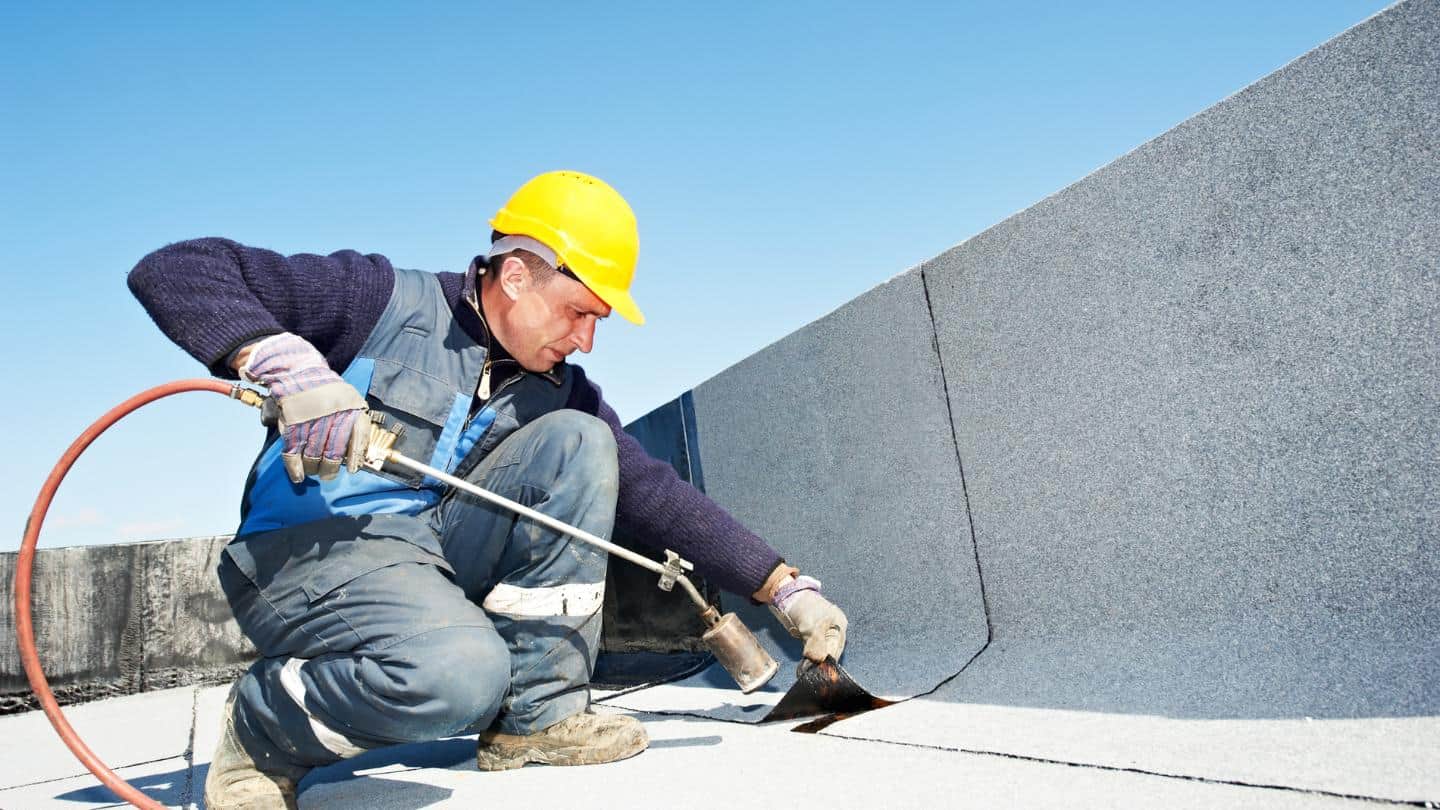As winter settles in, you’re likely looking forward to cozy nights by the fire and the magic of that first snowfall. But with these chilly pleasures comes a less enchanting side of winter: ice dams on your roof. If left unchecked, these icy intruders can cause serious damage to your home including leaks, mold growth, and even structural issues. That’s why learning how to prevent ice dams is essential for every homeowner.
In this article, we’ll guide you through some key strategies to minimize the formation of winter ice dams. From understanding what causes roof ice buildup in the first place to ensuring proper attic insulation and effective roof ventilation – we’ve got you covered. We’ll also offer tips on installing heat cables on your roof and maintaining gutters, as well as advice on when it might be time to seek professional assistance. With our help, you’ll be able to tackle any potential ice dam problems head-on this winter season!
Understanding the Causes of Roof Ice Buildup
It’s vital to understand that roof ice buildup is mainly caused by fluctuating temperatures and poor attic insulation, which in turn lead to the formation of ice dams. These temperature fluctuations can be amplified by the influence of climate on your home. For instance, in colder climates, snowfall may accumulate on your roof and then melt during warmer daylight hours, only to refreeze as the temperature drops overnight. This melting and refreezing cycle forms an ice dam—a layer of ice at the edge of your roof that prevents melting snow from draining off properly.
The roofing materials impact this process too. Some materials are more conducive to heat retention than others, thereby encouraging a faster thaw-freeze cycle that results in larger and more problematic ice dams. Dark-colored roofs absorb more sunlight and thus tend to promote quicker snowmelt during the day, while lighter-colored roofs reflect sunlight and slow down this process. Furthermore, if your attic isn’t adequately insulated or ventilated, it can cause uneven heating on your roof surface—another factor contributing towards ice dam formation. Therefore, understanding how these factors interplay will help you prevent unwanted winter water damages effectively.
Ensuring Proper Attic Insulation
Did you know that ensuring proper attic insulation can significantly reduce your chances of dealing with pesky winter problems? That’s right, good insulation is a key element in preventing ice dams. You see, when heat escapes from your home into the attic, it causes the snow on the roof to melt. The water then refreezes at the edges, creating dangerous and damaging ice dams. By investing in quality insulation materials for your attic, you’re not only boosting energy efficiency but also minimizing this risk.
There are numerous types of insulation materials available, each with its own unique benefits. Whether you choose batts and rolls or blown-in/loose-fill insulation depends largely on your specific needs and budget constraints. Remember, though – whatever type you opt for should be installed properly to achieve maximum energy efficiency and effectively prevent roof ice buildup. It might also be worth considering an energy audit to identify any other potential areas in your house where heat loss could be contributing to unwanted ice dam formation.
Ventilating Your Roof Effectively

Proper roof ventilation is another vital element to tackle – not only for the health of your roof, but also for your home’s overall energy efficiency. Having a well-ventilated roof will help maintain an even temperature and prevent warm air from accumulating in the attic. There are different Roof Ventilation Types you can consider depending on what suits your home best. Ridge vents run along the peak of your roof, allowing hot air to escape naturally. Soffit vents, on the other hand, are installed under the eaves of your house and draw cool air into the attic.
Optimizing airflow in your attic plays a crucial role in preventing ice dams during winter months. When there’s proper ventilation, it keeps the underside of the roof cold enough to avoid snow melting and refreezing at the edges which causes ice dams. To achieve Airflow Optimization, ensure that there is a balance between intake (soffit) vents and exhaust (ridge or gable) vents in your attic. This creates a natural flow where cool air enters through soffit vents and pushes warmer air out through ridge or gable vents. Following these tips will help you effectively ventilate your roof and minimise winter ice dam formation.
Installing Heat Cables on Your Roof
Installing heat cables on your roof is a proactive measure you can take to further safeguard your home from the harsh conditions of the colder months. These devices, also known as de-icing cables or heat tapes, work by providing low-level heat that helps prevent snow and ice accumulation, thus preventing the formation of ice dams. When choosing your heat cables, consider cable durability as a significant factor. You’ll want something that can withstand winter’s worst without failing or causing safety issues.
Now let’s talk about installation costs. It might be tempting to tackle this project yourself to save some money, but keep in mind this task involves working at heights and dealing with electrical components which could be risky if not handled properly. Hiring professionals for the installation ensures it’s done correctly and safely, though it will certainly add to the overall cost. However, given their effectiveness in preventing costly water damage caused by ice dams, many homeowners find that installing heat cables is an investment worth making for peace of mind during those frosty winter months.
Regularly Cleaning and Maintaining Gutters
Don’t overlook the significance of regularly cleaning and maintaining your gutters, as it’s a crucial task that can safeguard your home from various potential damages. It’s more than just a chore – it’s an essential preventive measure against ice dam formation in winter. By keeping your gutters unclogged and free-flowing, you ensure that melting snow has a clear path to drain off your roof, rather than pooling up and freezing into destructive ice dams. Consider gutter guards installation too; these handy devices can prevent leaves and other debris from clogging up your gutters in the first place.
Downspout maintenance is another key aspect of this process. Make sure downspouts are securely attached and directing water well away from your home’s foundation. Check for any leaks or loose sections which could cause water to spill out where it shouldn’t be, potentially leading to not only ice dams but also basement flooding or foundation damage. Remember, regular upkeep of both gutters and downspouts isn’t just about preserving curb appeal – it’s about protecting the integrity of your entire home during those harsh winter months.
Removing Snow from Your Roof
When you’re bundled up inside your cozy home, watching a fresh blanket of snow fall on your roof might seem like a beautiful sight. But it’s important to remember that too much snow can put significant strain on your roofing structure. This accumulation could lead to ice dam formation, which can cause severe damage if not prevented or treated promptly. To minimize this risk, consider removing excess snow from your roof. There’s no need to remove all the snow; just enough to keep the weight manageable and prevent ice dams from forming.
Mastering roof raking techniques is essential for safe and efficient snow removal. Use specialized snow removal tools such as telescoping roof rakes with plastic blades to avoid damaging your shingles. Start by standing safely on the ground and use the rake to pull down the snow two or three feet from the edge of your roof. Be sure not to stand directly under falling snow or icicles for safety reasons. Also, remember that while it’s beneficial to remove excess snow yourself, if accumulations are heavy or roofs are high, it may be best left in professional hands for safety reasons.
Seeking Professional Assistance for Safe and Effective Solutions

You might be wondering if it’s really necessary to call in the pros for snow removal, and to that we say yes! Not only can they help you avoid potential injury from trying to remove snow yourself, but they also come with a wealth of expertise. Expert evaluations are part and parcel of their service. They’re trained to identify potential problem areas where ice dams could form, and provide preventative solutions tailored specifically for your home. They’ll assess your roof’s pitch, insulation levels, ventilation system, and other factors that contribute to ice dam formation.
Furthermore, these professionals carry out thorough damage assessments as part of their services. It’s often hard for an untrained eye like yours or mine to spot signs of damage caused by heavy loads of snow or creeping ice dams until it’s too late. However, these experts will meticulously check for any structural damage or weak points on your roof that might have been caused by the weight of the accumulated snow or previous ice dam formations. Moreover, they’re equipped with specialized tools and equipment necessary not just for safe removal but also for minimizing further damage during the process.
Conclusion
In conclusion, remember that preventing ice dams is all about maintaining your home’s heat flow and immediately addressing snow accumulation. Proper insulation, ventilation, and installing heat cables can help immensely.
Don’t forget to keep your gutters clean and consider professional assistance for safe and effective solutions. With these tips in mind, you’ll be well-equipped to minimize winter ice dam formation.














